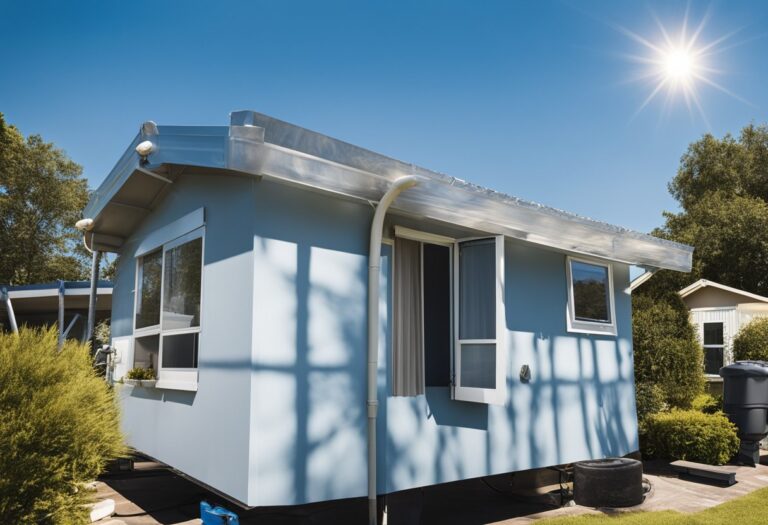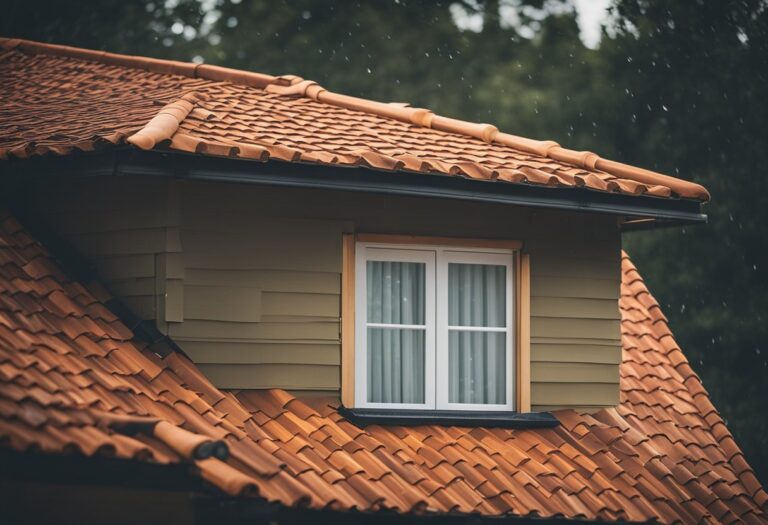Selecting the right roofing material is crucial for the durability, energy efficiency, and aesthetic appeal of your home. It’s more than just a design choice; it’s about finding a balance between practical needs and personal style. The right roof can protect your home from the elements, reduce energy costs, and increase its market value. With a variety of options available, from traditional asphalt shingles to modern synthetic materials, making the right choice can be overwhelming. This article aims to simplify that decision by guiding you through the essential factors to consider, such as climate suitability, longevity, maintenance, and budget. Our goal is to help you make an informed choice that not only protects your home but also reflects your taste and enhances its appeal.
Factors to Consider When Choosing Roofing Materials:
When it comes to selecting the right roofing material for your home, several key factors need to be taken into consideration. These factors will help you determine the most suitable option that not only meets your aesthetic preferences but also aligns with your home’s functional requirements.
Climate and Weather Conditions:
Heat and Sun Exposure: In areas with high sun exposure, materials that can reflect sunlight and withstand UV radiation are preferable.
Rain and Humidity: In wet climates, materials resistant to algae and mold growth are ideal.
Snow and Cold: In colder regions, materials that can bear the weight of snow and provide good insulation are essential.
Wind: For areas prone to high winds, materials with strong wind resistance are necessary.
Durability and Lifespan:
Consider the longevity of each material. Some materials, like slate, can last over a century, while others, like asphalt shingles, may require replacement every 20 years.
Aesthetic and Architectural Compatibility:
The roofing material should complement your home’s architectural style. For instance, clay tiles may suit Spanish-style homes, while slate roofs can enhance the look of historic homes.
Energy Efficiency:
Some materials can reflect more sunlight and offer better insulation, leading to lower energy costs. Materials like metal roofing can be more energy-efficient.
Maintenance Requirements:
Different materials require varying levels of maintenance. Wood shingles may need more frequent treatment for mold and rot, whereas metal roofs might need less upkeep.
Cost and Budget:
Costs can vary widely. It’s important to consider not only the initial installation cost but also long-term maintenance and potential savings from energy efficiency.
Weight and Structural Support:
Some materials, like slate, are heavier and may require additional structural support, which can influence the overall cost and feasibility.
Environmental Impact:
Consider the ecological footprint of the materials. Recycled or sustainable materials can be more environmentally friendly.
Local Building Codes and HOA Restrictions:
Local regulations and homeowners association rules may restrict certain types of roofing materials or colors.
Availability and Access to Expertise:
The availability of materials and skilled professionals for installation in your area can also influence your choice.
By carefully evaluating these factors, homeowners can make a well-informed decision on the roofing material that best suits their home’s needs, ensuring a balance between functionality, aesthetics, and cost.
Overview of Popular Roofing Materials:
When selecting a roofing material, homeowners have a variety of options, each with its own set of benefits and considerations. Here’s an overview of some of the most popular roofing materials:
Asphalt Shingles:
Description: The most common roofing material in the U.S., known for its cost-effectiveness and ease of installation.
Pros: Affordable, comes in various colors and styles, and suitable for a wide range of climates.
Cons: Shorter lifespan compared to other materials, susceptible to wind uplift.
Metal Roofing:
Description: Available in steel, aluminum, and copper, metal roofs are durable and long-lasting.
Pros: Excellent longevity, energy-efficient, fire-resistant, and can handle extreme weather.
Cons: Higher initial cost and can be noisy during rain or hail.
Clay and Concrete Tiles:
Description: Popular in warmer climates, these tiles are known for their distinctive style.
Pros: Long lifespan, fire-resistant, and excellent for hot climates.
Cons: Heavy, requiring additional roof support, and more expensive.
Slate Roofing:
Description: Made from natural slate rock, this is one of the most durable roofing materials.
Pros: Incredibly long-lasting, fireproof, and offers a unique, elegant appearance.
Cons: Very heavy, expensive, and requires skilled installation.
Wood Shingles and Shakes:
Description: Made from natural wood (like cedar), these offer a rustic, natural look.
Pros: Aesthetic appeal, naturally insulating properties.
Cons: Requires maintenance to prevent rot, mold, and fire-retardant treatments.
Synthetic Roofing Materials:
Description: Includes rubber, plastic, or composite materials designed to mimic other types.
Pros: Often more affordable, lightweight, and can imitate more expensive materials.
Cons: Varying quality, some may not be as durable as the materials they mimic.
Green Roofs:
Description: Living roofs covered with vegetation, promoting environmental benefits.
Pros: Excellent insulation, reduces stormwater runoff, and increases biodiversity.
Cons: Requires strong structural support, high initial cost, and maintenance.
The Environmental Impact of Roofing Materials
The choice of roofing materials not only affects the appearance and efficiency of your home but also has a significant environmental impact. Considering the ecological footprint of different roofing options is increasingly important in the context of environmental sustainability and energy conservation.
Resource Consumption and Production Impact:
Certain materials, like slate and clay, are natural but require significant energy to extract and transport. Conversely, synthetic materials might use less natural resources but involve more intensive manufacturing processes.
Energy Efficiency:
The energy efficiency of roofing materials directly impacts home heating and cooling costs and, consequently, overall energy consumption. Materials like metal roofing reflect sunlight and improve insulation, reducing energy usage.
Durability and Lifespan:
Long-lasting materials like slate and metal have a lower environmental impact over time due to reduced frequency of replacement. Shorter lifespan materials, like asphalt shingles, contribute to more frequent waste generation.
Recyclability and Waste Management:
The end-of-life disposal of roofing materials is a critical environmental consideration. Materials like metal are highly recyclable, whereas asphalt shingles often end up in landfills.
Eco-Friendly Options:
Green roofs, which incorporate vegetation, provide benefits like reducing stormwater runoff, improving air quality, and promoting biodiversity.
Some manufacturers offer eco-friendly materials made from recycled or sustainable resources.
Local and Sustainable Sourcing:
Choosing materials that are locally sourced can reduce the environmental impact associated with transportation.
Sustainable harvesting or production practices for materials like wood can also influence the ecological footprint.
Cool Roofs:
Designed to reflect more sunlight and absorb less heat, cool roofs can significantly reduce energy consumption, especially in hot climates, and thereby decrease the urban heat island effect.
Carbon Footprint:
The overall carbon footprint, including manufacturing, transportation, installation, and disposal, varies significantly among different roofing materials.
Professional Consultation and Installation:
When it comes to roofing, professional consultation and installation are critical for ensuring that the selected material is appropriate for your home and installed correctly for optimal performance and longevity. Here’s why consulting with and hiring a professional is essential:
Expert Assessment:
A roofing professional can assess your home’s structure, location, and climate conditions to recommend the most suitable material.
They can identify any underlying issues, such as structural weaknesses, that need to be addressed before installation.
Knowledge of Materials:
Professionals have in-depth knowledge of various materials, their pros and cons, longevity, maintenance needs, and suitability for different environments.
They can provide samples and showcase different styles and colors that complement your home’s architecture.
Quality Installation:
Proper installation is crucial for the roof’s durability and effectiveness. A professional roofer ensures that the installation meets industry standards.
They have the necessary tools and techniques to handle different materials, some of which require specialized installation methods.
Understanding of Building Codes and Permits:
Roofing professionals are familiar with local building codes and can ensure that your new roof complies with all regulations.
They can assist with obtaining any necessary permits for the roofing project.
Safety:
Roof installation can be hazardous. Professionals have the training and equipment to perform the job safely.
This reduces the risk of accidents and injuries that might occur with DIY installations.
Warranty and Guarantees:
Professional installation often comes with warranties for both materials and labor, providing peace of mind and protection for your investment.
In case of any issues, professionals typically provide follow-up services and repairs.
Cost and Time Efficiency:
Although it might seem more expensive upfront, hiring a professional can be more cost-effective in the long run. They can complete the job faster and with fewer errors, which can be costly to fix.
Advice on Maintenance and Upkeep:
Roofing experts can provide valuable advice on how to maintain and care for your roof, extending its lifespan and ensuring it remains in good condition.
In summary, selecting the right roofing material is a significant decision that balances aesthetics, durability, cost, and environmental considerations. The ideal choice varies based on climate, home style, and personal preferences. Key factors include material longevity, maintenance needs, and energy efficiency. It’s essential to consult with professional roofers for expert advice and quality installation, ensuring your roof not only enhances your home’s appearance but also functions effectively and sustainably over time.






